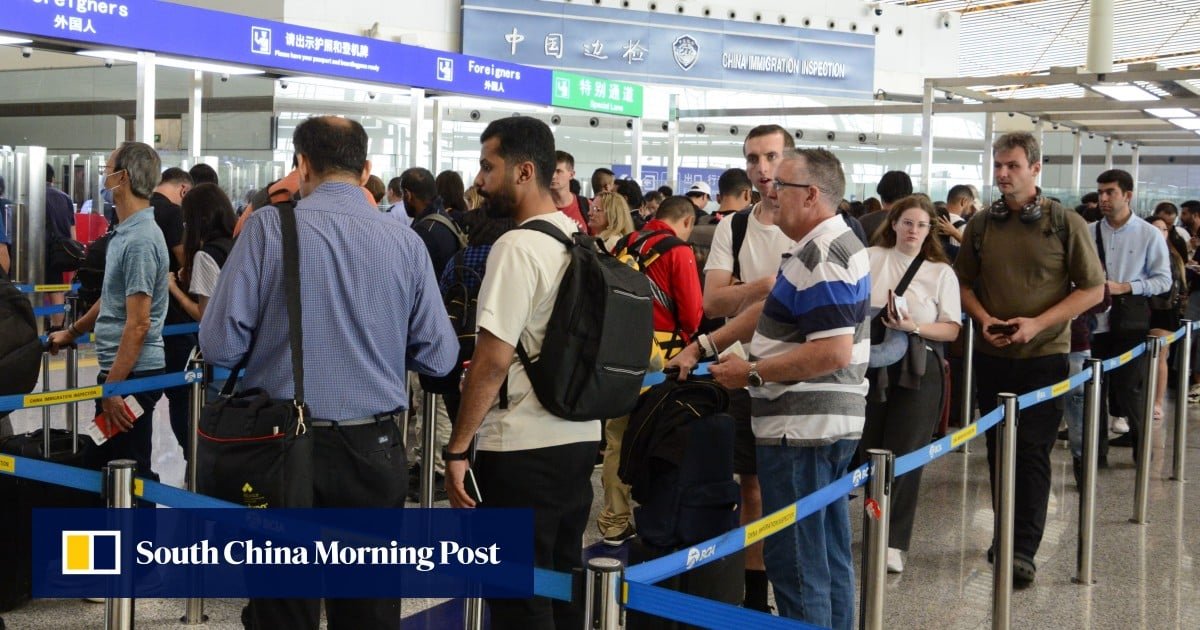
In terms of fuel, a Boeing 777 burns about 7.5 tonnes per hour, while a more fuel-efficient jet such as a Boeing 787 or Airbus A350 use around 5.5 tonnes, said Dennis Lau, consultancy services director with Hong Kong-based aviation services firm Asian Sky Group.
A popular route from Beijing to Frankfurt on average takes a Chinese airline 9.5 hours, while a German carrier would need 12 hours to complete the same journey, analysts said.
If each flight is taking an extra two hours each way, then it soon adds up to a lot of cash
More crew members are also required, while maintenance costs rise with each extra hour, and fleets would be able to do fewer flights, said Jonas Murby, a principal with the AeroDynamic Advisory consultancy in the United States.
“If each flight is taking an extra two hours each way, then it soon adds up to a lot of cash,” Grant said.
Airfares as of Tuesday were between 600 yuan to 1,200 yuan higher on European carriers compared to Chinese airlines, said Li Hanming, a Guangzhou-based aviation analyst.
Hong Kong-based Cathay Pacific, as well as Indian and Middle Eastern carriers, still fly over Russia, saving six tonnes of fuel per hour, he added.
Before the Ukraine war began, Western airlines would normally pass over the Kamchatka Peninsula on the way to China from North America or over Siberia if flying from Europe.
Authorities in Europe, the US and Canada barred arrivals by Russian airlines to voice opposition to the Ukraine war, and Russia responded by closing its airspace to 36 countries, mostly in Europe.
The Journal of Air Transport Management estimated in March that 6.2 per cent of all international flights take an average 13.3 per cent detour due to the closure of Russian airspace, raising global international air transport costs by 0.6 per cent.
Flights between North America and China that traverse the North Pole via Alaska spend 31.3 per cent more time and cover 31.4 per cent more distance, the journal said.
Air France-KLM found that bypassing Russian airspace took one to two hours more on its flights between China and Amsterdam, “leading to additional fuel costs, impacting flight schedules and crew number”, a company spokeswoman said.
The airline operates 23 weekly peak-season flights from Amsterdam to two mainland Chinese cities, as well as Hong Kong and Taiwan, down from 43 before the coronavirus pandemic.
British Airways announced in early August it would stop flights between London and Beijing from October until November 2025, while Virgin Atlantic said it would suspend its flights between London and Shanghai.
European airlines are in extremely unequal competition with China
In Finland, flagship carrier Finnair has cut back its direct flights to China since the pandemic as it lost its competitive advantage of flying straight over its land border into Russia, Timo Kantola, the Finnish consul general in Hong Kong, said in July.
Average yields for German airline Lufthansa “are under pressure” on Asia routes, partly due to the expanding flight capacity of Chinese airlines and the closure of Russian airspace, company press officer Joerg Waber said.
Lufthansa operates 40 weekly flights from Munich and Frankfurt to Beijing, Shanghai and Hong Kong – less than half the 2019 total.
“European airlines are in extremely unequal competition with China,” Waber said.
“They have also been using Russian airspace for more than two years. The shorter routes result in further cost advantages.”
Transfer hubs such as Doha, Dubai and Istanbul are benefiting from the changes due to their geographic positions connecting traffic between China and Europe, analysts said.
In Asia, Hong Kong, Seoul, Taipei and Tokyo are filling the role as transfer hubs.
Visitors to China rose by 130 per cent year on year to 17.25 million in the first seven months of this year, according to the National Immigration Administration
Outbound travel has also picked up since the pandemic, although not to 2019 levels.
Stopovers in Hong Kong between China and the US have kept demand “strong” for Cathay Pacific, group CEO Lin Shaobo told Chinese digital media outlet Jiemian News in August.
Lin also said the airline was “working hard to increase flights to the United States”.








